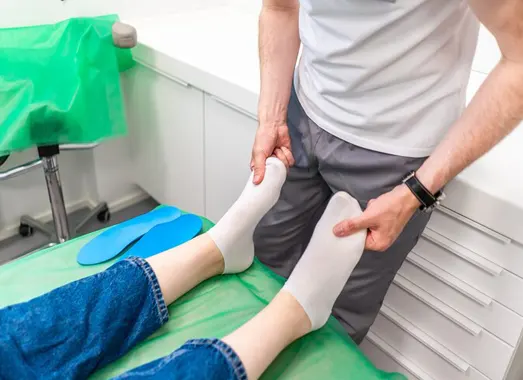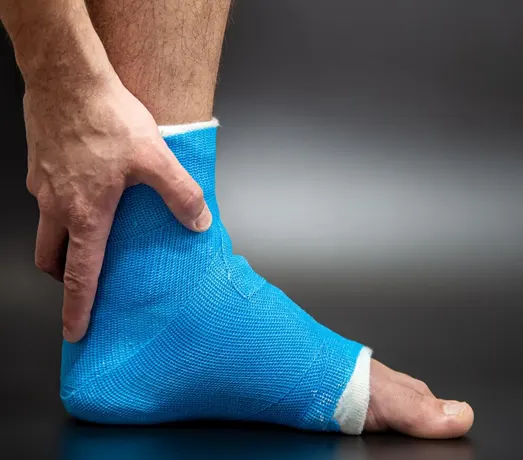
Complete Ankle Replacement (CAR)
A complete Ankle replacement surgery may be required for those patients who are suffering from unbearable ankle pain due to arthritis. In this surgery, the damaged parts of the 3 bones that make up the ankle joint are taken care of to improve the movement of ankle joint in the affected patient.
An Ankle replacement Surgery to replace the ankle joint with an artificial one is becoming quite common these days. Although it is not undertaken as frequently as the replacement of the knee or hip joints, yet, if required, it is very effective in reducing the pain experienced due to ankle arthritis. New progress in the blueprint of the synthetic ankle and improvements in the methods of performing operations have given a new dimension to complete ankle replacement, and a growing number of people are turning towards this option to get rid of the constant suffering inflicted upon them due to ankle arthritis.
Anatomy of an Ankle Joint…
Made up of 3 bones: the lower end of shinbone (called tibia), small bone of lower leg (called fibula), and the bone that fits into the socket formed by tibia and fibula (called talus). Sitting right on top of heel bone, talus primarily moves in only one direction, allowing the feet of the person to move up and down. To hold this bone arrangement at its place, there are ligaments on both sides of the ankle joint to hold the bones together.
While the ligaments connect the bones, the tendons are there to hold the muscles in body. One such tendon happens to be the large Achilles tendon, which is located at the back of the ankle. It is indeed the strongest tendon in the foot, and joins the calf muscles to the heel bone and provides the feet with the required strength to move, walk and run.

What necessitates a CAR?
There are clear signs related to a particular condition of the ankle that may prompt an Orthopaedic Surgeon to consider an Ankle replacement Surgery. There could be several reasons behind the arising of such a condition of the ankle joint like, osteoarthritis of the ankle, Bone spurs or outgrowths, or even a physical injury to the ankle caused by an accident.
The Artificial Ankle…
Every artificial ankle used for replacement is primarily made up of 2 parts…
- The tibial part (to replace socket of ankle at the top section).
- The talus part (to replace the talus at the top section).
The decision to use a special epoxy cement to join the metallic parts of the artificial joint to the bone is entirely at the discretion of the Orthopaedic Surgeon, who might or might not use it according to the condition of the joint. Some Orthopaedic Surgeons favor placing the artificial joint without any cement. The surface of this kind of prosthesis has a very intricate mesh of cavities that let bones to grow through it and join the prosthesis to the bone.
